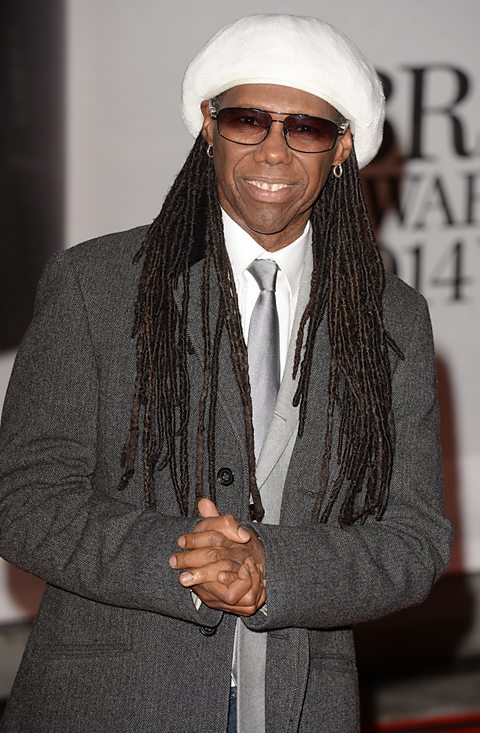Recording music
Set-up

Nile Rodgers, Producer
Most musicians make recordings of the music they create and play. In the past, this was a complex and often expensive process. Today, multiple studios exist which use modern technology to produce quality results. Here are some tips for тbuildingт your own studio:
- At the heart of a system will be a computer running a software DAW (Digital Audio Workstation)A system used to create electronic compositions or recordings. It can either be stand-alone hardware or a computer software package. (DAW) or linked to a sound desk.
- A multimedia soundcardA device used in conjunction with a computer to control input and output of audio. is essential for providing a high quality sound with a good range of inputs/outputs and monitoring facilities.
- Electric instruments can be plugged directly into the desk or sound card, but a microphone is required for recording acousticUsing natural sounds and spaces - not electronic. instruments and voices.
- A condenser microphoneSensitive, high quality microphone - particularly for studio use. with a cardioid pickup patternArea of sensitivity around a microphone, good for focusing in one direction - apple rather than heart shaped. is a good versatile choice for working with most acoustic sound sources. A diaphragm dynamic microphoneStrong microphone used for amplification and recording loud sounds. works well for drums and guitar amps. A large diaphragm dynamic microphone is suitable for bass guitar and kick drum. A small diaphragm condenser microphone is a good choice for acoustic instruments. A large diaphragm condenser microphone is the usual choice for vocals.
- Although a good quality microphone is important, so is the choice of recording space. In a studio a quiet, echo free and soundproofTo keep an area sealed from outside sounds. room is essential.
- An external midi controllerElectronic control of MIDI sounds. is essential for more sophisticated control of the devices in the DAW. These can be part of a USB keyboard controllerA piano style keyboard typically connected to a music software program. or a device with a range of rotary controlsA switch which has a circular motion., switches and faderA slider control on an electronic device for raising or lowering volume levels.
- Monitoring can be done through headphones, but high quality monitor speakerSpeaker used in a recording studio control room that produces a high quality, clear sound without undue emphasis of bass or treble. are needed if more than one person needs to hear the sound. Working exclusively with headphones can be tiring.
In this clip, Dev meets electro and dance music producer Kito. She explains how to turn your bedroom into your own digital audio workstation (DAW).
Setting up a home studio
Music technology can change sound through techniques such as compression, equalisation and panning